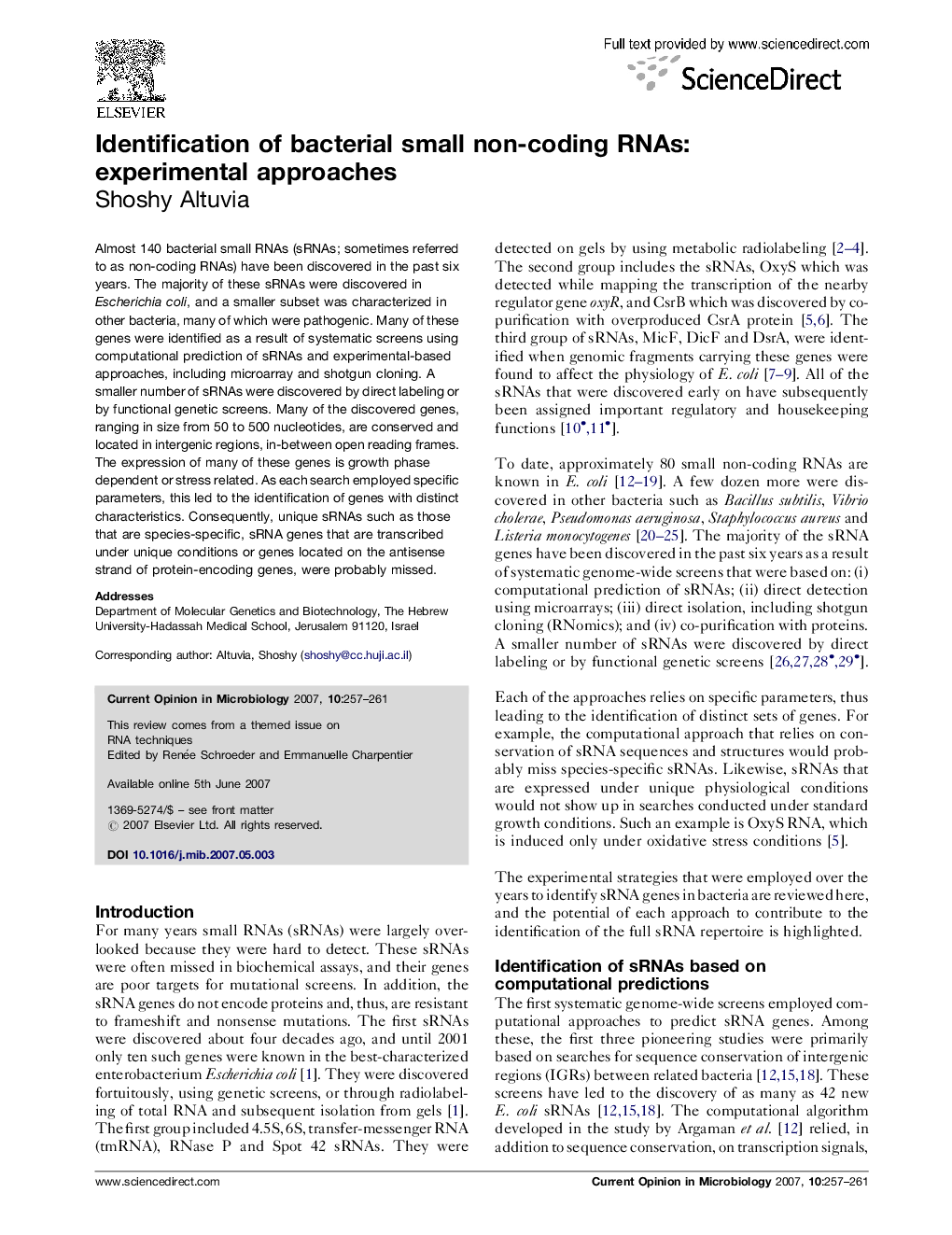| Article ID | Journal | Published Year | Pages | File Type |
|---|---|---|---|---|
| 3399675 | Current Opinion in Microbiology | 2007 | 5 Pages |
Almost 140 bacterial small RNAs (sRNAs; sometimes referred to as non-coding RNAs) have been discovered in the past six years. The majority of these sRNAs were discovered in Escherichia coli, and a smaller subset was characterized in other bacteria, many of which were pathogenic. Many of these genes were identified as a result of systematic screens using computational prediction of sRNAs and experimental-based approaches, including microarray and shotgun cloning. A smaller number of sRNAs were discovered by direct labeling or by functional genetic screens. Many of the discovered genes, ranging in size from 50 to 500 nucleotides, are conserved and located in intergenic regions, in-between open reading frames. The expression of many of these genes is growth phase dependent or stress related. As each search employed specific parameters, this led to the identification of genes with distinct characteristics. Consequently, unique sRNAs such as those that are species-specific, sRNA genes that are transcribed under unique conditions or genes located on the antisense strand of protein-encoding genes, were probably missed.
